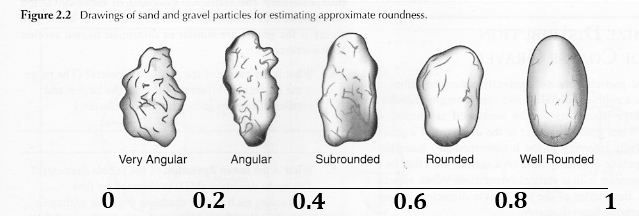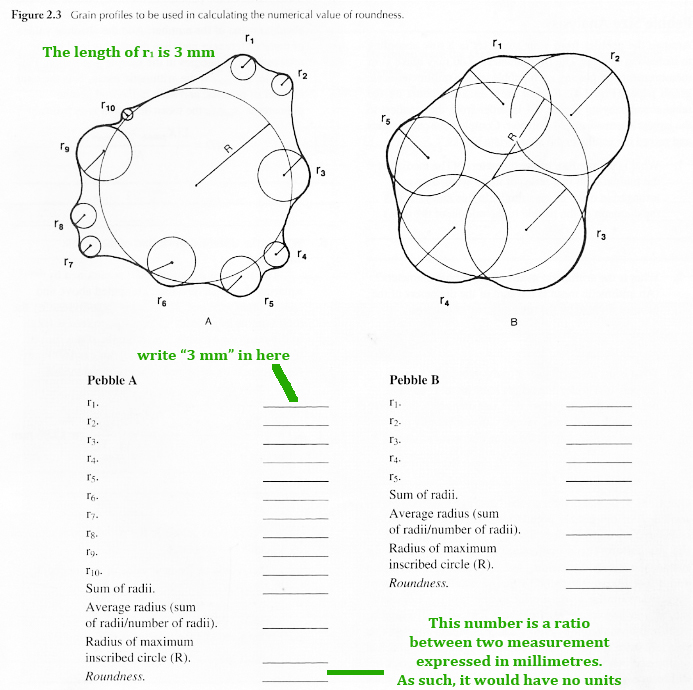
| ||
| Answers to Lab 2 | Last Updated • October 8, 2016 | |
For this lab you were required to answer all questions of pages 12 and 13 from chapter 2 in your lab manual. You were given instructions to add numbers to Figure 2.2, page 13, as shown in the following figure. Said numbers range from 0 to 1, in regular increments of 0.2. These numbers indicate quantitatively the roundness of a grain by comparing it to an ideal perfectly round grain: if the ratio between the two is 1, than the grains are a match and your original particle is also rounded. If your original grain is angular, its numerical value for roundness would be less than 1.  The first part of this exercise (question 1, page 12) asks you to estimate roundness visually (qualitative roundness). Using Figure 2.2 you should define Pebble A and Peble B of Figure 2.3 with one of the adjectives (not the number, it is a qualitative estimate, not a quantitative one!) from Figure 2.2 The second part of this exercise (question 2, page 12) asks you to calculate a value for roundness (quantitative roundness) by dividing the average radius of the small circles in Figure 2.3 (this circles represent "bumpos", or "angularities", that are responsible for the grain not to be rounded) by the radius of the maximum inscribed circle (the "perfect" round grain). Again, the lower this ratio is, the more th grain would deb angular, and the higher the ratio is, the more the grain resembles an ideal rounded grain. So you should measure (in millimeters) the length of all the smaller radii in each circle (indicated as rn), then the length of the radius of the maximum inscribed circle (indicated as R). Calculate the average of the rn, and divide it by R, and find out the quantitative value for roundness. All your measurements should have a unit, the final ratio should be a number without units (as shown in Figure 2.2). The numbers you get, which should be transferred from Figure 2.3 page 13 in your answer to question 2 page 12, should be of course less than 1 (otherwise you made a mistake) and should roughly fit in the range of your visual estimate (from Figure 2.2 page 13, as you wrote in your answer to question 1, page 12)  Once you are done, stop at page 13. That is the end of your assignments and of the materials you need to cover in this chapter. © Alessandro Grippo, since 1994 (XVI) Los Angeles, California | ||